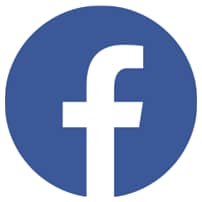-
Discovery’s Edge: Mayo Clinic and NASA – Exploring two frontiers
Space—with near-zero gravity, no atmosphere, and extremes of heat and cold—is an unusual and often hostile environment.
But it’s also an opportunity—for medical researchers who see maladies and phenomena they can scarcely examine in the familiar environment of Earth.
Several Mayo Clinic researchers and clinicians are working with the National Aeronautics and Space Administration and other collaborators to learn more about the effects of space travel on the human body, to better equip humans to withstand long space travel, and to exploit the unique environment of microgravity.
“It’s difficult to believe that we won’t be learning things that will be applicable to clinical practice,” says Alejandro Rabinstein, M.D., medical director of Mayo Clinic’s Neuroscience Intensive Care Unit, who is investigating the feasibility of putting astronauts in a hypothermic torpor for transport to Mars. “There may be things that we are going to learn because we are going to be testing human physiology. That makes it particularly interesting to me.”
Stuck as Stem Cells
Astronauts spending long periods in space lose bone, muscle, and cardiovascular capacity. The problem may lie with the body’s stem cells—the wild card cells that take on various functions as needed and become bone cells, heart cells, or whatever else is required. In microgravity, stem cells multiply but remain stem cells. They fail to produce the specialized cells needed for tissue replacement and regeneration.
That’s a bad thing if you’re an orbiting astronaut. But it may be a good thing if, like Abba Zubair, M.D., Ph.D., you are trying to grow lots of stem cells.

“People say you cannot make tissues because they are stuck as stem cells,” he says of researchers who have studied cell regeneration in space. “But I say, Oh, that’s what I want! I want the stem cells!”
Dr. Zubair, a laboratory researcher at Mayo Clinic’s Center for Regenerative Medicine, recently sent three lines of stem cells to the International Space Center. They were launched and arrived in February aboard flight SpaceX CRS-10.
Human stem cells are vital for research, for stem cell therapy (such as bone marrow transplant for the treatment of bone or blood cancers), and regenerative tissue therapy. Dr. Zubair, in fact, is researching the use of stem cells to help patients recover neurons and blood vessels after a stroke. But stem cells are hard to grow in quantity.
“We do have an idea of how to stimulate them in the lab, but it is so difficult,” says Dr. Zubair from his lab at Mayo Clinic in Florida. “When you do that, you end up with more what we call differentiated cells, meaning non-stem cells that have limited life span and don’t function like stem cells.”

When word went out that NASA was looking for research uses of the space station with the potential for commercial application, Dr. Zubair submitted his proposal. “Other than being interested in the science part of it—how gravity affects cell division, especially stem cells—our main focus is how feasible is it to grow cells at the International Space Station and bring them back for clinical application. We want to treat patients.”
In February Dr. Zubair sent up mesenchymal cells that he has been researching to treat stroke patients, a hematopoietic stem cell, and a leukemia cell line with a cancer stem cell in it—in a bioreactor the size of a large microwave. Activated by changing temperature, the cells grew in carefully controlled conditions under the watch of astronauts and real time imaging for between two and three weeks. The experimental package was returned to his lab in mid-March.
He will continue to grow the cells on earth to see how their growth changes in comparison to a control of three cell lines that remained on Earth. He will examine gene expression and cell functionality in lab animals to see if the cells might be safe to use in humans.

If growing stem cells in space proves feasible, Dr. Zubair imagines a future in which cells are continually grown in a space station or satellite and harvested for use in patients. It may even be possible to generate human tissues and organs in microgravity, where 3D structures are easier to grow.
“Growing up in Africa, I got fascinated with that twinkly light in space. I always wanted to be an astronaut,” he says. “Then in high school my career adviser looked at me and said, ‘By the time Nigeria sends a rocket may not be in your lifetime. You better think of something else other than being an astronaut. So I went into medicine.”
Cool Trip to Mars
When astronauts travel to Mars, they will follow an elliptical path known as the Hohmann transfer orbit for about eight months. They will eat, drink, breath, and excrete waste, which will tax the systems of the spacecraft. And they will be bored out of their minds.
“We have to find a way to minimize the metabolic demands of the astronauts and to make the long travel more tolerable from the psychological standpoint,” says Alejandro Rabinstein, M.D., who is working with SpaceWorks, an aerospace engineering firm in Atlanta, which received a grant from NASA to investigate putting astronauts into a hypothermic torpor.
“Hypothermia reduces metabolic demand and puts the brain in a state of rest,” says Dr. Rabinstein. “You do not form memories, which would be psychologically beneficial.”
Hypothermia is most familiar to us as the consequence of falling into cold water or being cold and wet for a long time. As the body’s core drops below 95 degrees F (from 98.6 degrees), shivering stops, the pulse weakens, breathing slows, and the patient loses cognitive abilities and then consciousness. Unabated, hypothermia kills.

Hypothermia also has clinical uses, which is Dr. Rabinstein’s focus. Mild therapeutic hypothermia protects the brain and improves short-term neurologic recovery and survival in victims of cardiac arrest. Even in a hospital setting, there are risks in rewarming patients. Fluctuating potassium levels can trigger cardiac arrhythmia.
“On the other hand, that is with sick people to begin with,” says Dr. Rabinstein. “Astronauts are the ultimate healthy people. If this is going to work, they would have to go through a very strenuous preparation to be able to tolerate hypothermia.”
The plan is to cool the space travelers with gas through a nasal tube until their core temperature drops to about 91 degrees (33 degrees Celsius) over about four hours. Metabolic rate would drop 50 to 70 percent. Astronauts would be fed an intravenous solution of glucose, amino acids, lipids, and vitamins, and minerals.
Astronauts would rotate between being hypothermic and being awake as others go into torpor. Astronauts would probably have to take sedatives to withstand the unpleasant transition to hypothermia. “Once you reach the target temperature, then the brain starts shutting down. So once you reach that state, it’s probably more comfortable,” says Dr. Rabinstein. “I have never been at 33 degrees myself. I don’t know that I would like to be the one to try it.”
Dr. Rabinstein is working with Matthew Kumar, M.D., a Mayo Clinic anesthesiologist, who is studying induced hypothermia in pigs—“as close to humans as we can get without using human volunteers,” he says.
“It sounds like science fiction because it is science fiction,” says Dr. Rabinstein. “The aim of this work is to find ways to put astronauts on Mars. I don’t think I will ever see that. But it seems to be as reasonable a first step as one can think.”
So Little in Common
What do astronauts with vision problems and women with polycystic ovary syndrome have in common?
It’s not ovaries. All people diagnosed with the syndrome are, of course, women. All the astronauts with these particular vision problems are men.
What they do have in common is a set of genetic variants associated with something scientists call the “one-carbon metabolism pathway,” which is how the body processes several B vitamins.

In women, these genetic traits are associated with polycystic ovary syndrome, a common endocrine system disorder in which women may have enlarged ovaries that contain many small follicles of fluid. Women with this condition may experience infrequent or prolonged menstrual periods, unusual hair growth, acne, and obesity.
In astronauts, these same genetic patterns are associated with eye issues such as folds in the choroid (underlying the retina), cotton wool spots (where nerves in the retina have been damaged), optic disc edema (swelling of the spot where the optic nerve joins the back of the retina), and increased incidence of intracranial hypertension (pressure around the brain). These vision issues are being recognized as one of the leading health risks of space flight.
What is most unlikely about this story is that anyone made the connection between the syndrome and astronauts’ vision problems in the first place. That honor goes to Scott Smith, Ph.D., the lead investigator at NASA. He made the connection by reviewing medical literature, says Alice Chang, M.D., a Mayo endocrinologist who specializes in polycystic ovary syndrome. “When they focused on the one carbon metabolism pathway and did the literature search, they noticed that there are some things that were shared.”
Dr. Chang got involved after Dr. Smith talked about the astronauts with a Mayo colleague at a conference. Now she and he are collaborating on research to compare the genetics of astronauts with vision problems to women with the syndrome and idiopathic intracranial hypertension.
“Ultimately the astronauts would benefit from this, probably in terms of direct benefit, if they can figure out what the underlying cause of the vision problems are,” Dr. Chang says.
Dr. Chang’s investigation may benefit Earth-bound women as well. “For those groups I think we’re going to learn a lot more about what potential risk factors might be underlying intracranial hypertension [often associated with the syndrome] and then for polycystic ovary syndrome, whether we should be screening more for vision problems or looking more at this pathway,” she says.
Why don’t women astronauts get these kinds of vision problems from space flight? Dr. Chang suspects because women with these genetic markers are likely to show signs of polycystic ovary syndrome and have been weeded out as candidates.
The relationship between astronauts and women with the syndrome may signal that it’s time to change the name of the syndrome, she says. It could be that the name prevents doctors from seeing a manifestation of the syndrome in men because, of course, they don’t have ovaries. But they may have other symptoms, such as vision problems.
“This is really a fun and great story,” says Dr. Chang. As a scientist, this is what you dream of—that people will look through the literature and find these connections and look at conditions in a new way.”
Bone Lost in Space
Long-term space travelers lose bone, especially in their hips and legs. Because the skeleton supports little weight during long periods in microgravity, the body resorbs bone and doesn’t replace it. Astronauts in one month can lose what a senior citizen would lose in a year—about 1 percent of the body’s bone mass.

But not all astronauts are affected equally, and Shreyasee Amin, M.D., a Mayo Clinic rheumatologist and specialist in osteoporosis, would like to find out why. She is currently working with investigators at NASA to explore reducing fracture risk following long-duration space flight.
“There are some people who have very little bone loss, and there are others that have had a significant amount of bone loss,” she says. But it’s not clear why. Is it the amount of exercise during space travel? Or their level of activity before leaving Earth? Or age? Or identifiable genetics?
“The main concern is coming back to Earth or going to another partial gravity environment, such as Mars or the moon, where you are expected to do a lot of tasks and weight bearing on bones that may be quite weak,” she says. And it’s not guaranteed that astronauts will make a full recovery of their bone even back on Earth, despite a lot of rehabilitation through exercise. So Dr. Amin and colleagues are looking at ways to prevent or minimize bone loss in the first place.
Astronauts already exercise on treadmills, stationary bikes, and a simulated weight machine to try to stem the lose of muscle and bone. But researchers are also investigating the use of medications such as bisphosphonates, commonly prescribed to prevent osteoporosis.
The goal, Dr. Amin says, is “to prevent the bone loss that is occurring in space so that when they come back to earth they are not at much higher risk for fractures.”
- Greg Breining, March 2017







